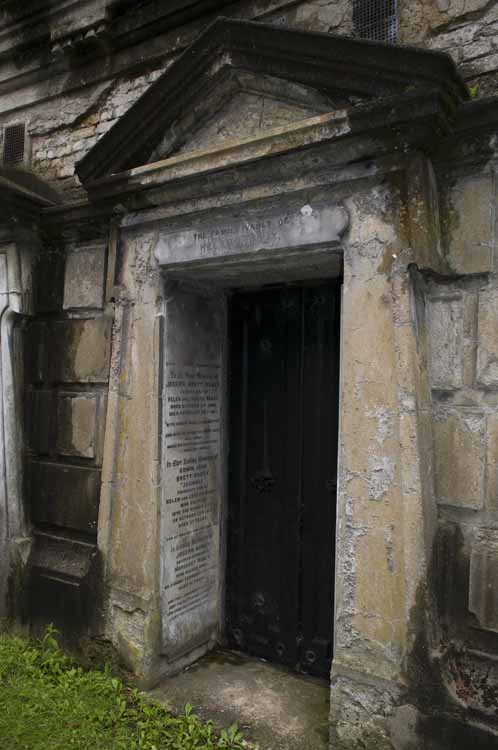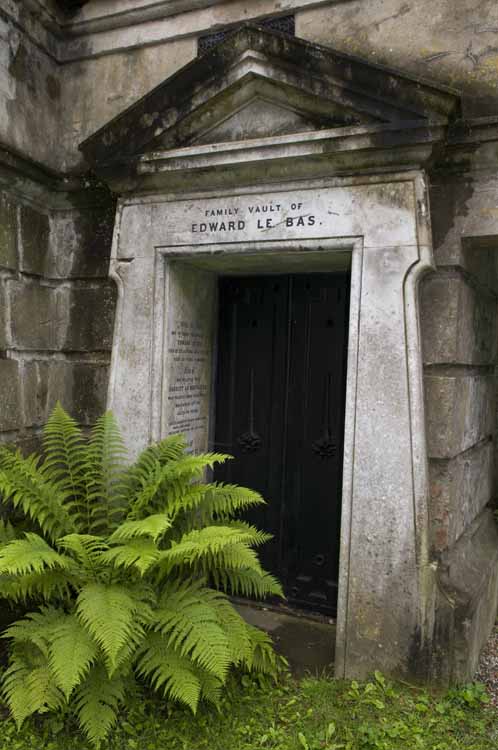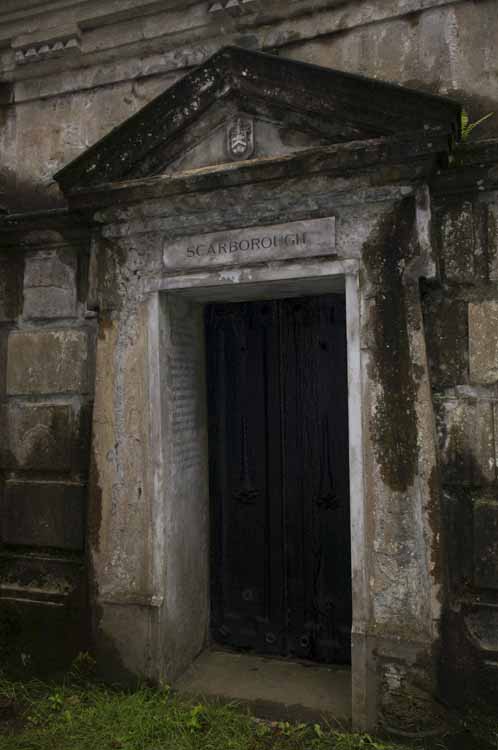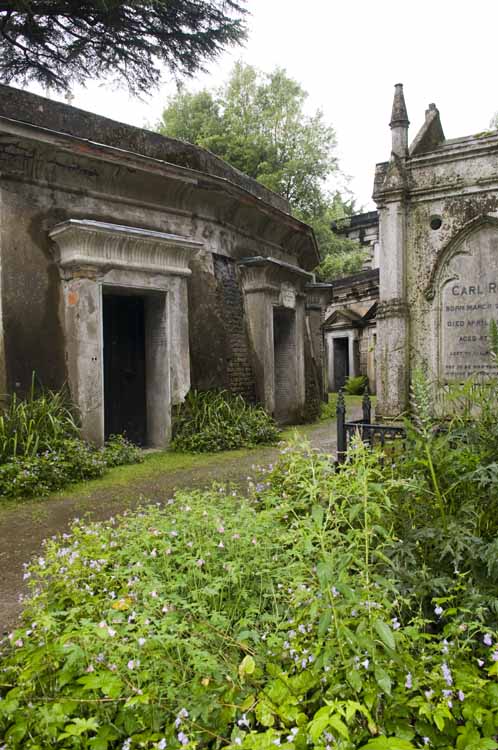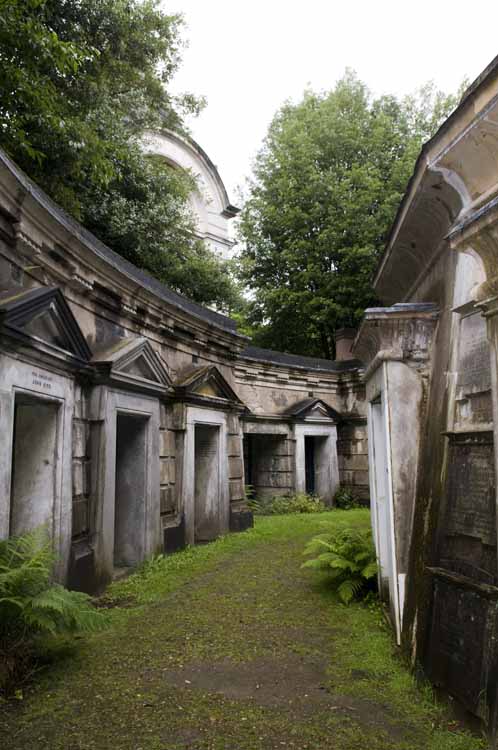
Highgate Cemetery
Highgate Cemetery is a place of burial in north London, England. It is designated Grade I on the English Heritage Register of Parks and Gardens of Special Historic Interest in England. It is divided into two parts, named the East and West cemetery. There are approximately 170,000 people buried in around 53,000 graves at Highgate Cemetery. Highgate Cemetery is notable both for some of the people buried there as well as for its de facto status as a nature reserve.
The cemetery in its original form – the northwestern wooded area – opened in 1839, as part of a plan to provide seven large, modern cemeteries, known as the "Magnificent Seven", around the outside of London. The inner-city cemeteries, mostly the graveyards attached to individual churches, had long been unable to cope with the number of burials and were seen as a hazard to health and an undignified way to treat the dead. The initial design was by architect and entrepreneur Stephen Geary. On Monday 20 May 1839, Highgate Cemetery was dedicated to St. James by the Right Reverend Charles Blomfield, Lord Bishop of London. Fifteen acres were consecrated for the use of the Church of England, and two acres set aside for Dissenters. Rights of burial were sold for either limited period or in perpetuity. The first burial was Elizabeth Jackson of Little Windmill Street, Soho, on 26 May. Highgate, like the others of the Magnificent Seven, soon became a fashionable place for burials and was much admired and visited. The Victorian attitude to death and its presentation led to the creation of a wealth of Gothic tombs and buildings. It occupies a spectacular south-facing hillside site slightly downhill from the top of the hill of Highgate itself, next to Waterlow Park. In 1854 the area to the east of the original area across Swains Lane was bought to form the eastern part of the cemetery. This part is still used today for burials, as is the western part. Most of the open unforested area in the new addition still has fairly few graves on it.
The cemetery's grounds are full of trees, shrubbery and wild flowers, all of which have been planted and grown without human influence. The grounds are a haven for birds and small animals such as foxes. The Egyptian Avenue and the Circle of Lebanon (topped by a huge Cedar of Lebanon) feature tombs, vaults and winding paths dug into hillsides. For its protection, the oldest section, which holds an impressive collection of Victorian mausoleums and gravestones, plus elaborately carved tombs, allows admission only in tour groups.
The newer eastern section, which contains a mix of Victorian and modern statuary, can be toured unescorted. The tomb of Karl Marx, the Egyptian Avenue and the Columbarium are Grade I listed buildings.
War Graves The cemetery contains the graves of 316 Commonwealth service personnel maintained and registered by the Commonwealth War Graves Commission, in both the East and West Cemetery, 257 from the First World War and 59 from the Second. Those whose graves could not be marked by headstones are listed on a Screen Wall memorial erected near the Cross of Sacrifice in the older (Western) Cemetery.
